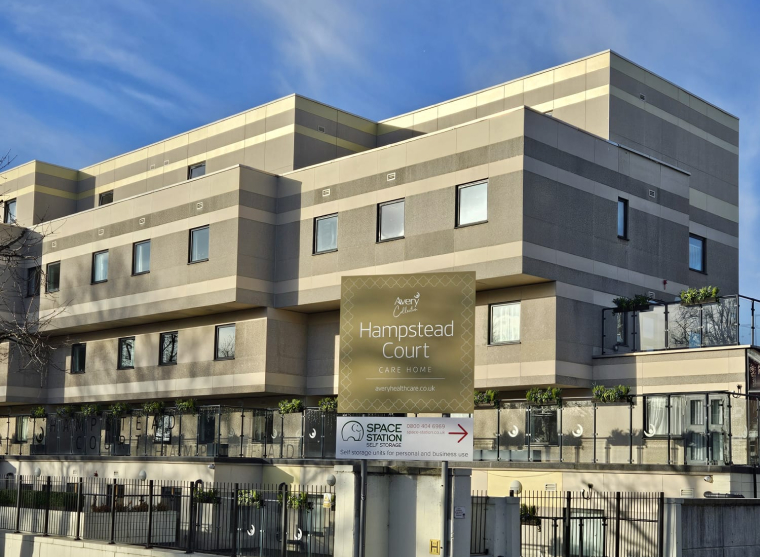UK Government commits to finding solutions for later living
(Housing and Leveling up White Papers 2017 2022)
By 2043 the UK predicts a 56% increase in the over 75’s, and an 88% increase from 1.6 million to 3 million putting increasing pressure on the housing system and care providers. Enter the later living sector
Later Living under supply
42% of UK’s residents aged over 75 are living alone, 2/3rds of whom are women. The mental health issues associated with solo later living are only now being fully understood: enter the case for later living as a desirable social alternative. With just 74,000 housing with care beds today the UK market penetration rate is 0.9% versus the international benchmark of 6%. Enter 160% growth forecasts in the next 5 years alone. Savills in their 'Sky's the Limit' presentation estimate 570,000+ households over 75 could afford to rent a retirement home using the rental income from their main home.

Later Living: The UK Opportunity explained

The argument for later living
House price inflation, equity release, lifetime gifts, bereavement, loneliness, poor quality ‘for sale’ stock; simplified quality for those willing to pay for it...

The later living
opportunity is
Home as a service, one bill, optional care packages, flexibility, guest suite for stop overs...

Later living design and planning requirements
Planning Use Class C2 Retirement village, generously sized 1 and 2 bed apartments, 24 hour staffing and circa
5,000 to 7,500sqft amenity space with events programme. Potentially no affordable housing requirement....
Our Asset Management Leaders
The key to our success is our people
By 2043 the UK predicts a 56% increase in the over 75’s, and an 88% increase from 1.6 million to 3 million putting increasing pressure on the housing system and care providers. Enter the later living sector
Both the UK government 2017 Housing and 2022 Levelling up White Papers acknowledge these startling statistics and set out a commitment to finding solutions to assist the delivery of much needed purpose-built later living accommodation.
42% of UK’s residents aged over 75 are living alone, 2/3rds of whom are women. The mental health issues associated with solo later living are only now being fully understood: enter the case for later living as a desirable social alternative. With just 74,000 housing with care beds today the UK market penetration rate is 0.9% versus the international benchmark of 6%. Enter 160% growth forecasts in the next 5 years alone. Savills in their 'Sky's the Limit' presentation estimate 570,000+ households over 75 could afford to rent a retirement home using the rental income from their main home.
The argument for later living rent
- Post war UK house price inflation has been generous to the baby boomers; many have released equity to support children into home ownership and are willing to re-distribute housing equity to the next generation and cashflow their retirement.
- Divesting equity and a supported decision to move to a later living community at 80 offers an opportunity for lifetime gifts to reduce inheritance tax in return for family members acting as rent guarantors.
- Currently private senior housing is dominated by ‘for sale’ stock, many with exposed ransom exit fees and long re-sale periods.
- Most current schemes are registered providers or local authority “sheltered housing” with limited care provision unable to change their models to meet the discerning Baby Boomers who are used to quality and willing to pay for it.
- ability to rent or delay the sale of the family home,
- quicker access to services and care,
- later relocation opportunities without the need to sell.
- A ‘one move solution’ with optional increasing service and care packages embedded into rental proposition. Some offerings then further enhanced by the provision of a Care Home on site.
- Longer stay than traditional BTR (18-24 months), student (9 months) with expected tenancies on average 5+ years. Slower lease up than BTR but lower churn, and income guaranteed by family members.
- Flexibility extends to family members who can visit and stay in a guest apartment. Amenities can include a Care Suite for increased visiting services such as chiropodists or hairdressers.

of resident

on entry

single resident

by couple

within 10 miles

- Use class C2 Retirement village.
- A later living village feel with a housing mix of generously sized 1 and 2 bed apartments.
- 5,000 to 7,500sqft of lounge, amenity and clubroom space.
- 24 hour staffing to provide assistance but not care, and to facilitate the programme of events.
- Optional care hours packages for cleaning and personal hygiene needs as well meals on site.
- A wellbeing suite including exercise studio and physio rooms with a programme of activities including anything from pottery to stretching classes.
- Wheelchair accessible throughout with mobility scooters for rent, on-site parking, electric car charging and easy access to public transport, local amenities and town centre.
- A lifestyle choice with independence designed in.
- Technology enabled emergency call and 24 hour Concierge.
Note: Planning Consents ordinarily do not require an affordable contribution unless a local authority has a specific policy for affordable housing under EC2 use, which is rare.
Our Asset Management Leaders
The key to our success is our people





























